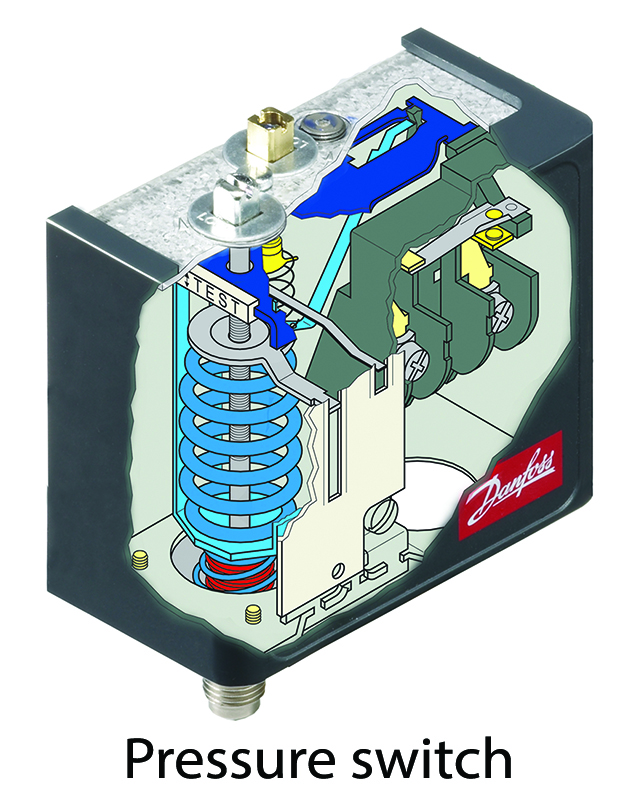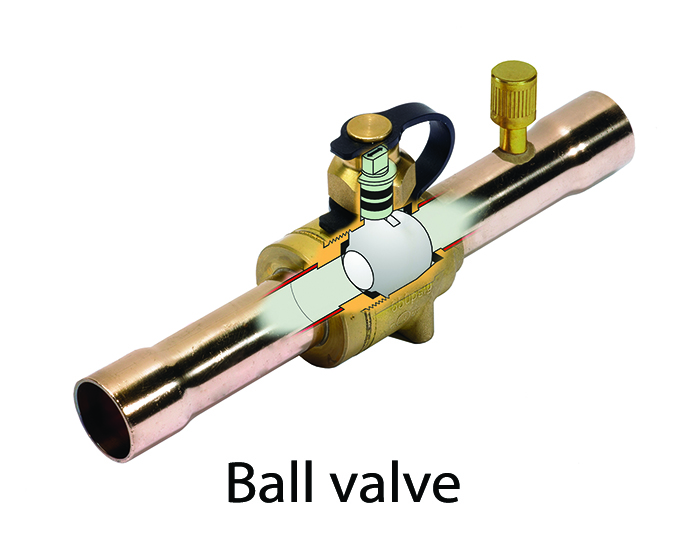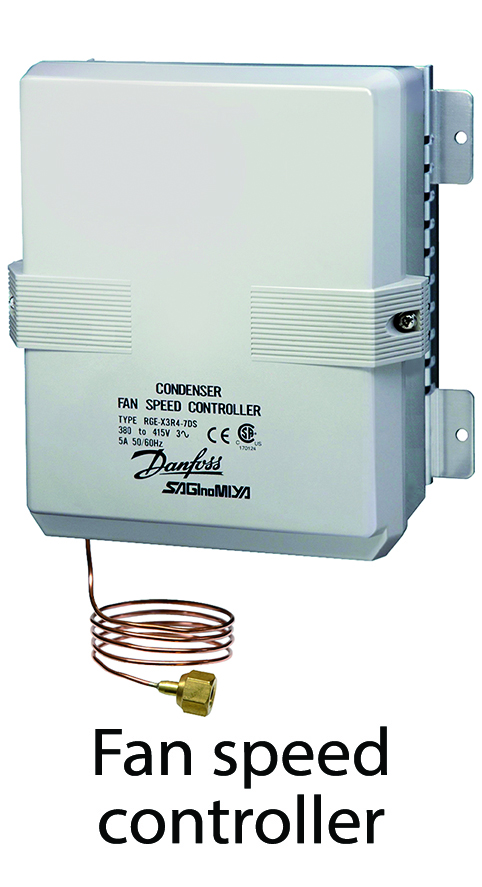Pressure switches
While most refrigeration systems use a thermostat to regulate temperature, an alternative method is a low pressure switch, also called a low pressure control. It works using the relationship between the saturated refrigerant pressure in the evaporator and evaporating temperature. This way, the pressure switch can be set to shut off the refrigeration system when the suction pressure returning to the compressor corresponds to the correct evaporating temperature, thereby controlling the temperature of the walk-in cooler.

A pressure switch has two main functions: protection and control. On the protective side, it limits refrigeration pressure by stopping the flow of refrigerant if pressures exceed a safe operating limit or if pressures drop too low, usually caused by a leak in the system. On the control side, controlling the pressure also controls various aspects in the cooling cycle, like compressor cycling, fan cycling, and pump-down.
Basic pressure switches can either be for high or low pressure. If the refrigerant discharge pressure builds too high, the switch flips from closed to open, lowering the pressure. Similarly, if the suction pressure falls too low, the switch flips closed again, bringing the pressure back up to an acceptable level. As with thermostats, correctly setting the differential is vital in ensuring proper operation.
Ball valves
Ball valves are manually operated, shut-off valves, typically used in liquid, suction and hot gas lines. Ball valves get their name due to their internal structure: the shut off mechanism is ball-shaped. By having this shape, a simple quarter turn is all that is needed to seal the valve, cutting the flow of the refrigerant. Not only is the seal tight, but it is also very reliable, being able to make a complete seal after years of disuse. And while ball valves lack the fine control of other valve types, they are not intended for anything other than an on/off function.

While the ball valve will remain unused in the open position during normal operation, it becomes invaluable during maintenance and repairs. By having ball valves installed in a walk-in’s refrigeration system, refrigerant can be blocked off in one section or another. That means that less refrigerant will need to be recovered, saving time and money in the form of labor and materials.
Ball valves are superior to other types of shut-off valves, such as right-angle and Z-pattern valves, because ball valves are able to operate without any drop in pressure. When these other types of shut-off valves are in the open position, the refrigerant is forced to change direction, both slowing it down and creating tiny eddies or vortices where the flow changed direction. Conversely, when ball valves are open, the internal opening in the ball is the same size as the surrounding pipe, ensuring that the refrigerant will flow without any impedance.
Fan speed controllers
Fan speed controls are increasingly being used in walk-ins due to their ability to reduce noise and stabilize condensing pressures under different climatic conditions. Along with those benefits, fan speed controls can often increase a walk-ins energy efficiency. By maintaining a constant low speed, fans will consume less electricity than when simply switching between running at full speed and being off.

An additional factor to consider is the operation of the evaporator fan motors. Under normal operating conditions, the fan motors run 24/7, adding heat into the walk-in and consuming energy in order to continually move air around. A more customized control option includes turning the evaporator fans off during the thermostat off-cycle and pulsing the fans for part the time to ensure the walk-in cooler or freezer air temperature is circulated over the thermostat sensor, achieving stability. Depending on the application, another control option is using two speed fan motors for special areas like preparation rooms for food processing.
Each of these products affect a relatively small aspect of the refrigeration cycle of a walk-in cooler or freezer, but they add up, with the end result being an energy efficient walk-in suitable to your needs.
Part 1 - Walk-in coolers: an introduction
Part 2 - Walk-in coolers: compressors and heat exchangers
Part 3 - Walk-in coolers: filter driers and sight glasses
Part 5 - Walk-in coolers: thermostatic expansion valves and solenoid valves
Part 6 - Walk-in coolers: temperature controls
